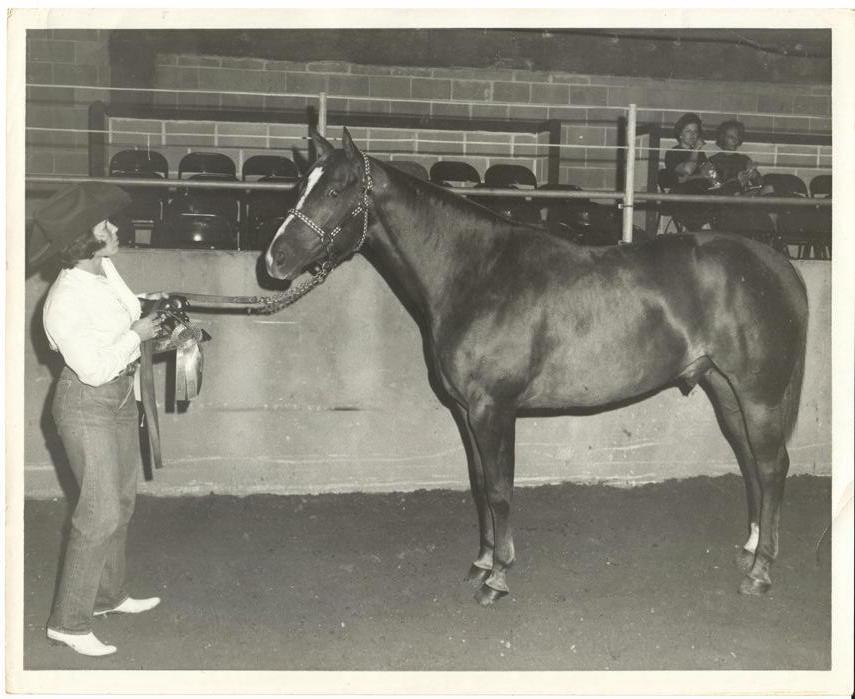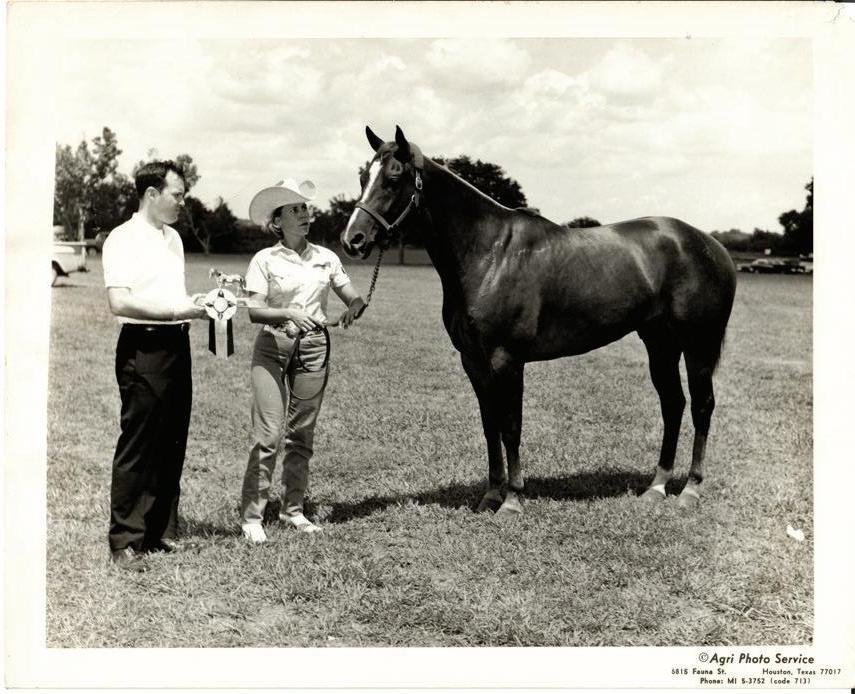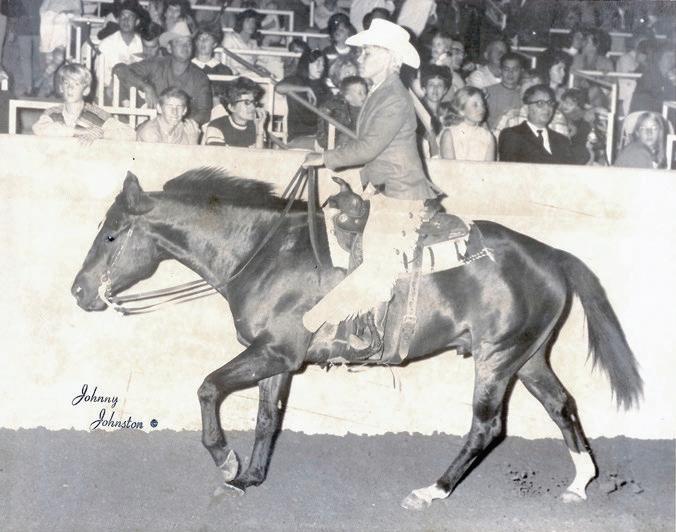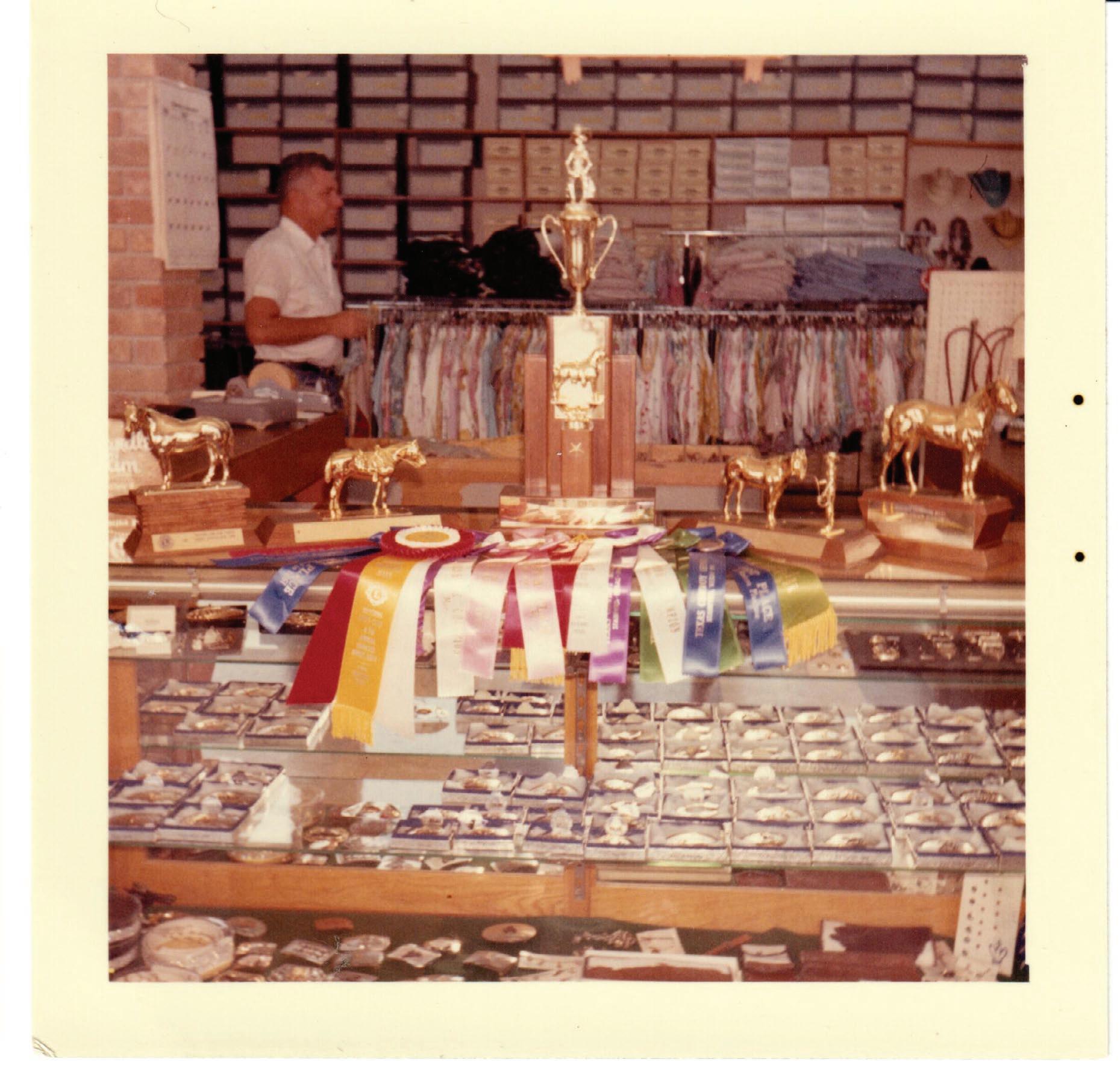
11 minute read
JERRY THE JEEP
There was once a WWII surplus jeep that was destined for the junk yard. It was a forlorn looking vehicle, the original Army drab green mixed with rust and red paint that had been added years before. Pieces of wood were screwed into the hood to rest the windshield on when it was lowered. There were
several screws missing that attached the brake pedal to something important, but they had been skillfully replaced with baling wire. Driving along one day, I spied the jeep sitting by the side road with a hand lettered “For Sale” sign on the windshield. I turned around and went back to look it over. It was a pretty sad machine, but the tires weren’t too bad, the battery was not too old and it started without too much prompting. After the owner counted out my $200, I gave the jeep a friendly pat on the fender and christened it, Jerry. Jerry the Jeep. Jerry’s tow bar was dropped onto the hitch of my pickup and he was on his way to the ranch. Jerry became my personal ranch vehicle. With his 4-wheel drive engaged he could crawl up and down canyons like a mountain goat. One day on the nine-mile drive to the back of the ranch, Jerry and I were flying along and I missed a turn in the road. I use the term “road” loosely since our ranch roads were far from super highways. They were actually nothing more than clearings made by several passes of a D-8 Cat through the rocks and cedar. So on this day I took a wrong turn. I looked up and the road was suddenly no more. I slammed on the brakes and as luck would have it, that was the moment when the baling wire holding the brake pedal to the something important broke. The brake pedal slammed to the floor board, but Jerry kept going. There was nothing ahead of us but boulders half the size of Jerry. We had no place to go. I closed my eyes, threw my arms across my face and screamed like a banshee. We were airborne for a bit before my faithful Jerry came back to earth, shuddering, dirt and dust flying everywhere, and I looked around. We were sitting in the middle of a bunch of huge boulders with no apparent exit. I threw my head back and laughed ‘til I cried. There was no such thing as a cell phone in those days and it was a long walk back to the main house, so I got out and somehow managed to roll a couple of the big rocks to the side. Then I shifted Jerry into 4-wheel drive, and I begged my little jeep to do his best. By golly, he just crawled up and over those rocks. I hadn’t believed it could be done, but we were off and running. When Jerry’s baling wire broke, I would put him in 4-wheel drive, drop him into first gear and crawl up and down the canyons, letting the engine act as the brake. To get to our ranch, there were 4 or 5 miles of dirt road passing through two other ranches after we crossed a low water bridge. One day I was on my way to visit with the only neighbor on our side of the river. One of the ranches I had to cross had a ragged piece of gate that the rancher would close occasionally when he brought stock down to the river. The man was too cheap to put in a cattle guard or bumper gate, and I got really smoked every time I had to stop to open and close that gate. Earlier that particular day the gate had been open. I knew this because I’d already been to town, so as I started off to visit Sarah on the next ranch, Jerry and I were really flying. It was a beautiful day. The wind was blowing in my hair and Jerry’s windshield was down. Then wouldn’t you know it?! The neighbor had closed his gate. The baling-wire-brake failed, and I quickly went to Plan B: Close my eyes, throw my arms over my face and scream! I was ecstatic and grinning like a ‘possum. I was sure I had finally wiped out that devilish gate. When Jerry and I shuddered to a stop. I put Jerry in reverse and backed up to examine the damage. I’d only broken one thin little upright board that the chain went around. Oh well. Jerry the Jeep and I continued on our trip to visit Sarah. Her house was 200 yards straight up the side of a bluff, with a flat spot at the top of the driveway the length of one pickup truck—no problem for Jerry. I put him in 4-wheel drive and up we went. I killed his engine leaving him in gear and he stayed put like a well-trained dog. Who needed brakes? Sarah and I drank a pot of coffee and visited, and then it was time for me to go back to the ranch. I jumped in Jerry, stepped on the clutch and that jeep and I took off down the face of the bluff, doing about 50 miles an hour backwards. There was no time to try and start the engine. I had to concentrate on making the 90 degree turn at the bottom of the drive or I’d end up in the river. Sarah stood watching with her mouth open in a great big “O” as Jerry and I whipped around and came to a halt. I started him up, gave her a cheery wave and drove back to the ranch. As I walked in the house the phone was ringing. It was Sarah. She said that she had never had a guest leave quite like that and in the future, she wanted me to back my jeep up her driveway. At least that way I’d be headed the right way when I left. One winter when the weather was really raw, with snow and ice everywhere, I let the ranch hands drive Jerry back to their camp. The next morning they all came walking in to the barn. There was no sign of Jerry. The story finally unfolded that Jerry had skidded off the road and was going over the edge of the canyon. They had all jumped out and held on to him long enough for one of them to get a chain around his bumper. My Jeep spent the rest of that winter hanging out in space over that canyon chained to a big cedar tree. Poor Jerry. All the kids in the family learned to drive in Jerry the Jeep. They would take him down to the river bottom and make him buck and jump as they popped the clutch and ran him into big pecan trees and generally had a wonderful time. Bless his carburetor, Jerry the Jeep, took it all, and, except for that stupid baling wire, he never missed a beat.
Advertisement
Three Burials of Melquiades Estrada
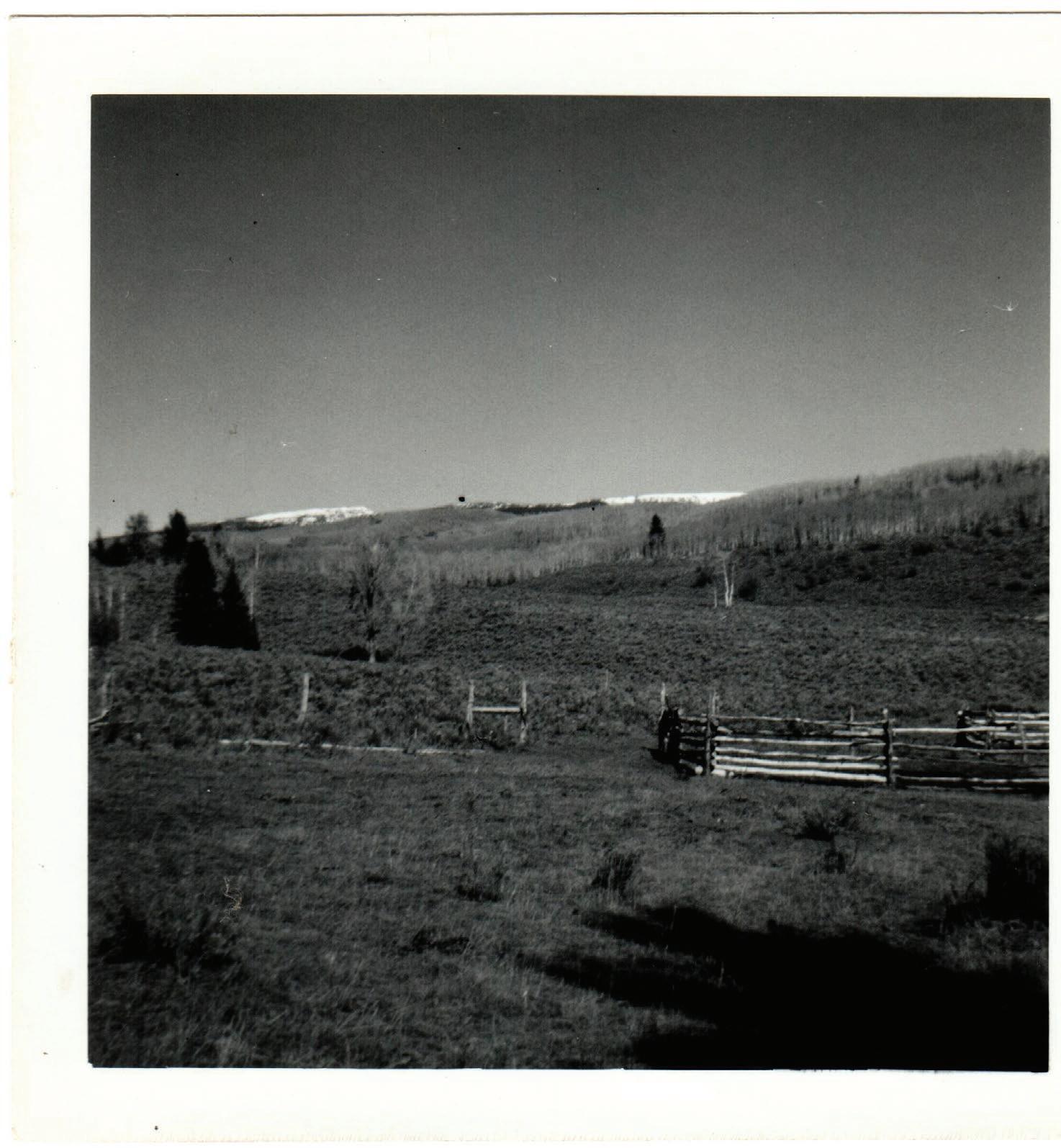
I have watched Three Burials of Melquiades Estrada, directed by and starring Tommy Lee Jones, three or four times in rapid succession. I have not been so affected by a movie in a long, long time. Rather than just being impressed with Jones’ direction and acting, I was more impressed with the message of friendship and loyalty. I have been privileged to see a lot of the this in my life… granted, it’s been more than 45 years ago, but I lived and worked alongside hombres, wetbacks, if you will. Let me go back to 1954 when my dad moved us to Laredo from Madisonville. The only Mexicans I had ever seen were a few itinerant workers passing through our area. I never gave them much thought and certainly never dreamed of interacting with people I believed, in my ignorance, were dirty, ignorant peons. Then we moved to Laredo down on the Texas/Mexico border. I’ll never forget the first day our family drove into town. It was dry and brown. I was 14 years old and a sophomore in high school having spent my entire life in Madisonville. I hated Laredo. I wanted to go home, but very soon I experienced the warmth of the Mexican people and discovered what mi casa es su casa truly meant. I was welcomed with open arms. In a short time, I came to love Laredo and the Mexican people. I never wanted to leave and staged a pretty unspectacular runaway attempt when we moved to Houston a little over a year later. Now, I’ll fast forward to early 1960 after I’d married Buster and moved, along with my cutting horse, King Joe Doc, to the ranch he leased about 12 miles west of Junction in the Hill Country. A mile and a half of the South Llano River ran along its northern border and from there it was all uphill by way of canyons, chalk bluffs, cedar and rattlesnakes. It was a lot of work, but I loved it. I’d had a premature baby girl born in late summer, but we didn’t have a lot of money, so I had to pitch in as one of the hands, getting up at 3:00 a.m. to catch the stock on bed ground. I’d surround the baby with mesquite logs and stretch cheese cloth over her to keep the flies off while I worked stock in the pens around the windmills miles back on the ranch. Then I’d fly back down the canyon, with my baby girl on a pillow in the truck and get lunch to bring back to the hands. A typical meal included lots of fried chicken, five gallons of beans, ten or more gallons of sweet tea, and all the stuff that went with it. I always said Buster married me because I was such a good ranch hand, and he got to sleep with me, too. The only thorn in the ointment was the Border Patrol. It was in the 1950s, I think, that the U.S. discontinued the Bracero Program that allowed Mexicans to come across the River to work. When that happened, all the affordable ranch labor dried up. We had no choice but to use illegal labor. The legals didn’t want to do the dirty ranch work— if you could even find any of them. About that same time, so I’m told, the Border Patrol started sending people from the North to patrol our Texas borders. They didn’t want the agents to understand or sympathize with the ranchers or the poor Mexicans, whose families were starving in Mexico. They hounded all of us ranchers unmercifully. If I got a call from a neighbor up the river asking for “a spool of green thread,” I knew the Border Patrol was on the way. The nearest post was in Del Rio, a pretty long drive from Junction, but those suckers were around a lot… in cars and in the air. We did a pretty good job of keeping our hombres’ camps hidden. They had to be very careful with
their trash, no tin cans or anything like that that could be spotted from the air, and they would take game trails to their camp, changing their route often. Still, the Border Patrol would find them, ship them back to Mexico and in a few months, they would be back. Actually, I think the hombres would try to get caught around Christmas and Cinco de Mayo. They got a free trip home. All of those hombres were really good men who were just trying to earn enough money to feed and clothe their families. They avoided trouble like the plague. I would send, via money order, almost all their earnings to their families in Mexico, traveling out of town to different post offices to mail them so the post office employees wouldn’t turn us in. Once, when Buster was out of town for a week or so and I was on the ranch alone with a tiny baby, I noticed that our dogs started acting really strange just after dark… not barking or whining… just strange and looking out toward the brush. Our house was built against a canyon wall at the mouth of a really large canyon sixteen miles from town. There was only one neighbor on our side of the river. I tried very hard not be scared, not to think about the huge cougar that had been seen several times on the ranch—once by me while I was on horseback. Still, I kept a loaded gun at every door and one under my pillow. Eventually, I realized that every night my husband was gone, one of more of our hombres, had camped out in the brush near the house to watch over me and my baby girl. All of those guys were special and would have laid down their lives for me. That is why I identify with the friendship and loyalty portrayed by this movie.

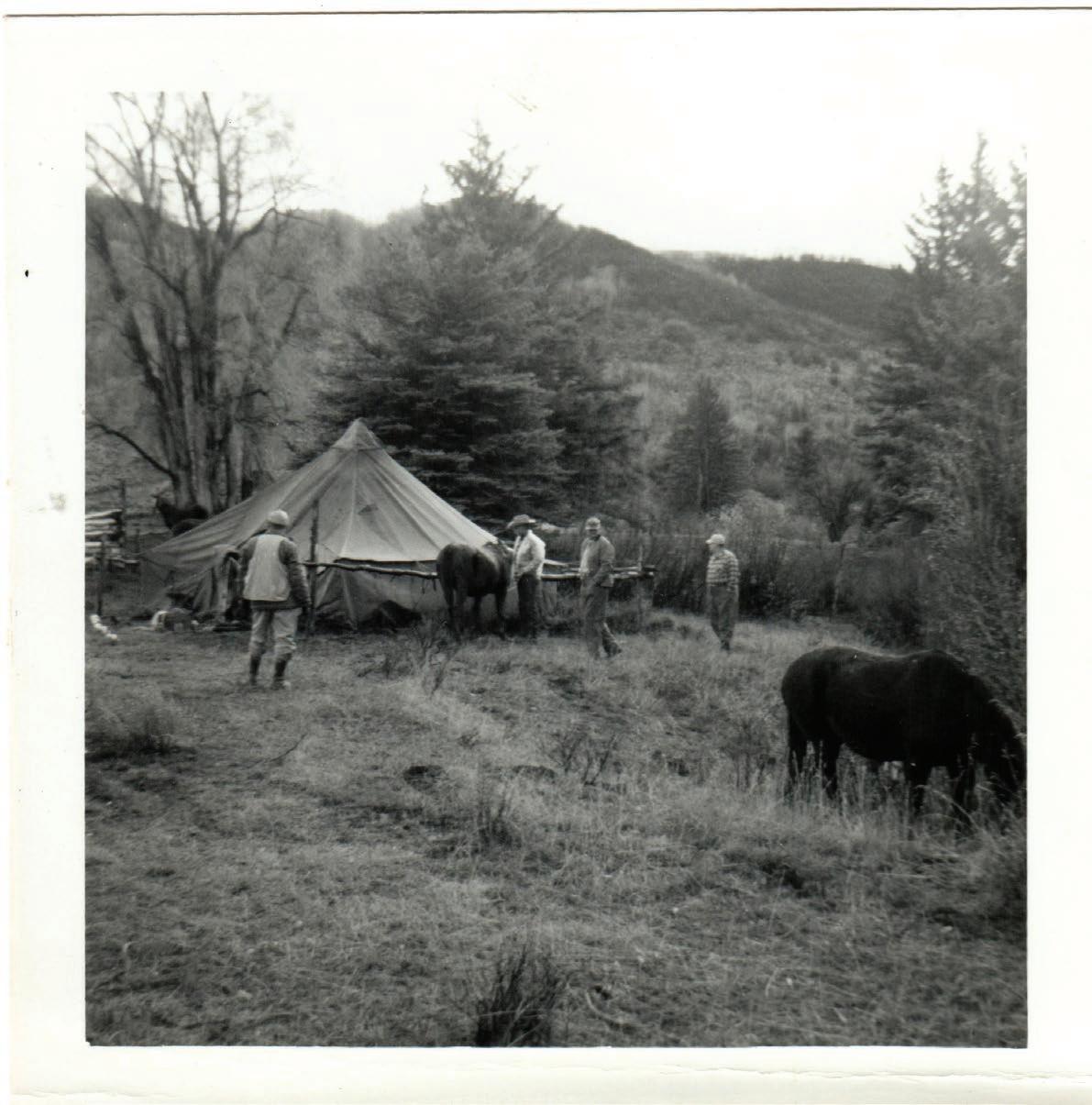

The Horseshowing Years, 1960-1969
